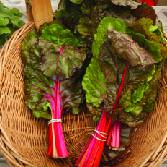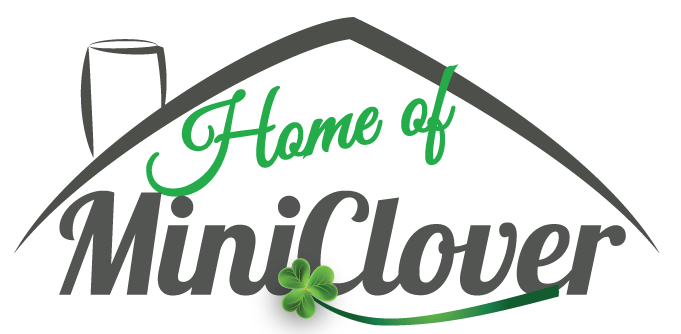-
CATEGORY ::
- All Seeds /
- All Flower Seeds
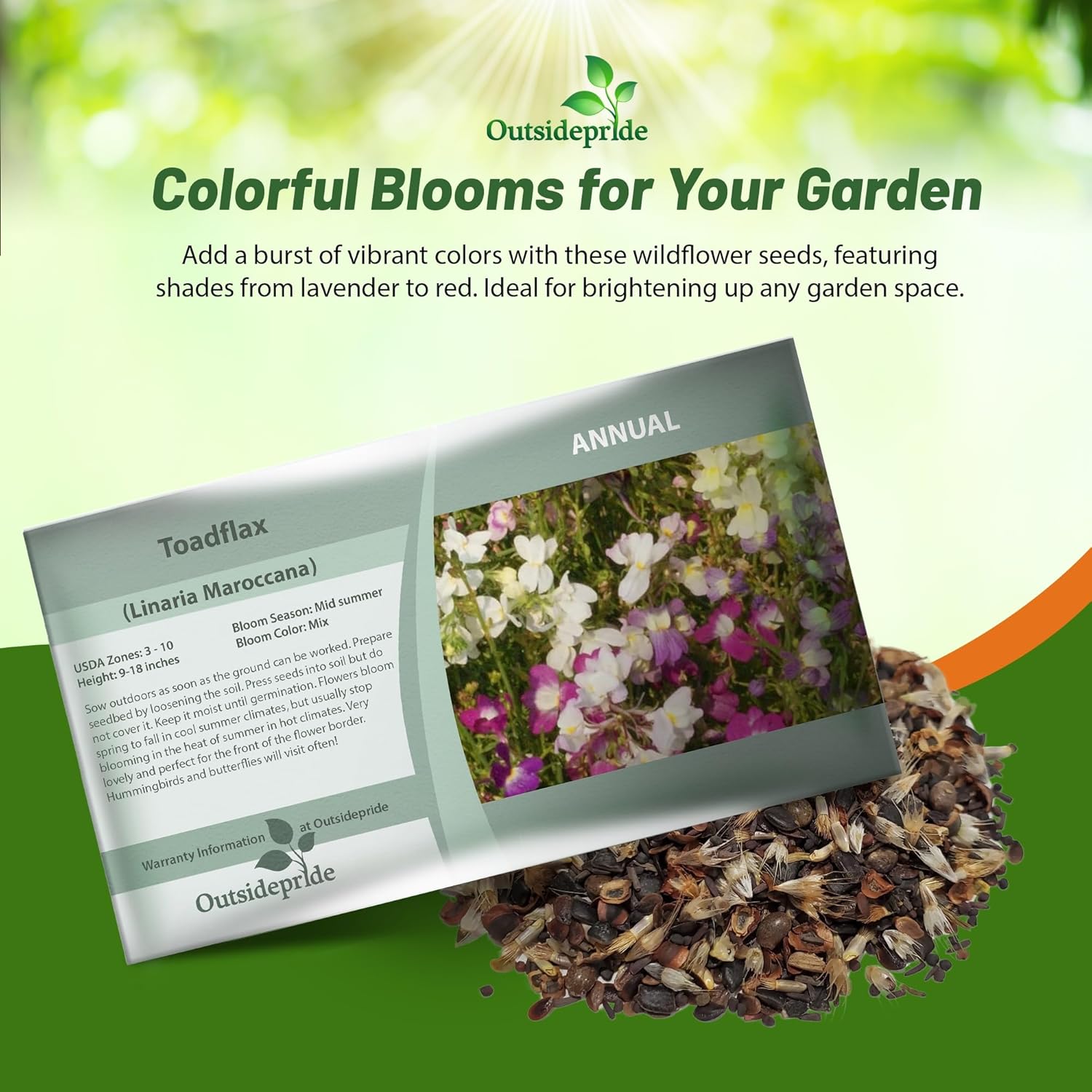

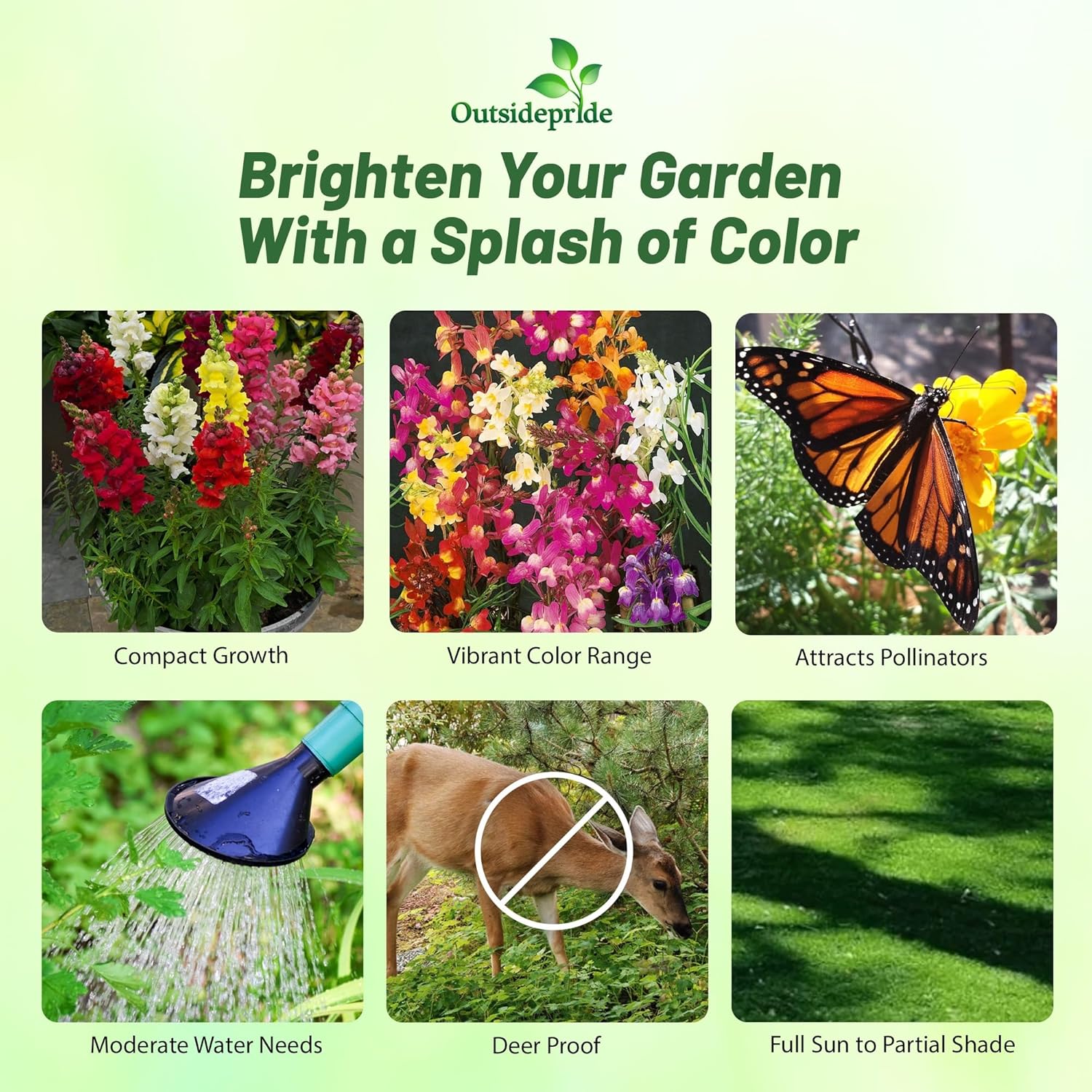


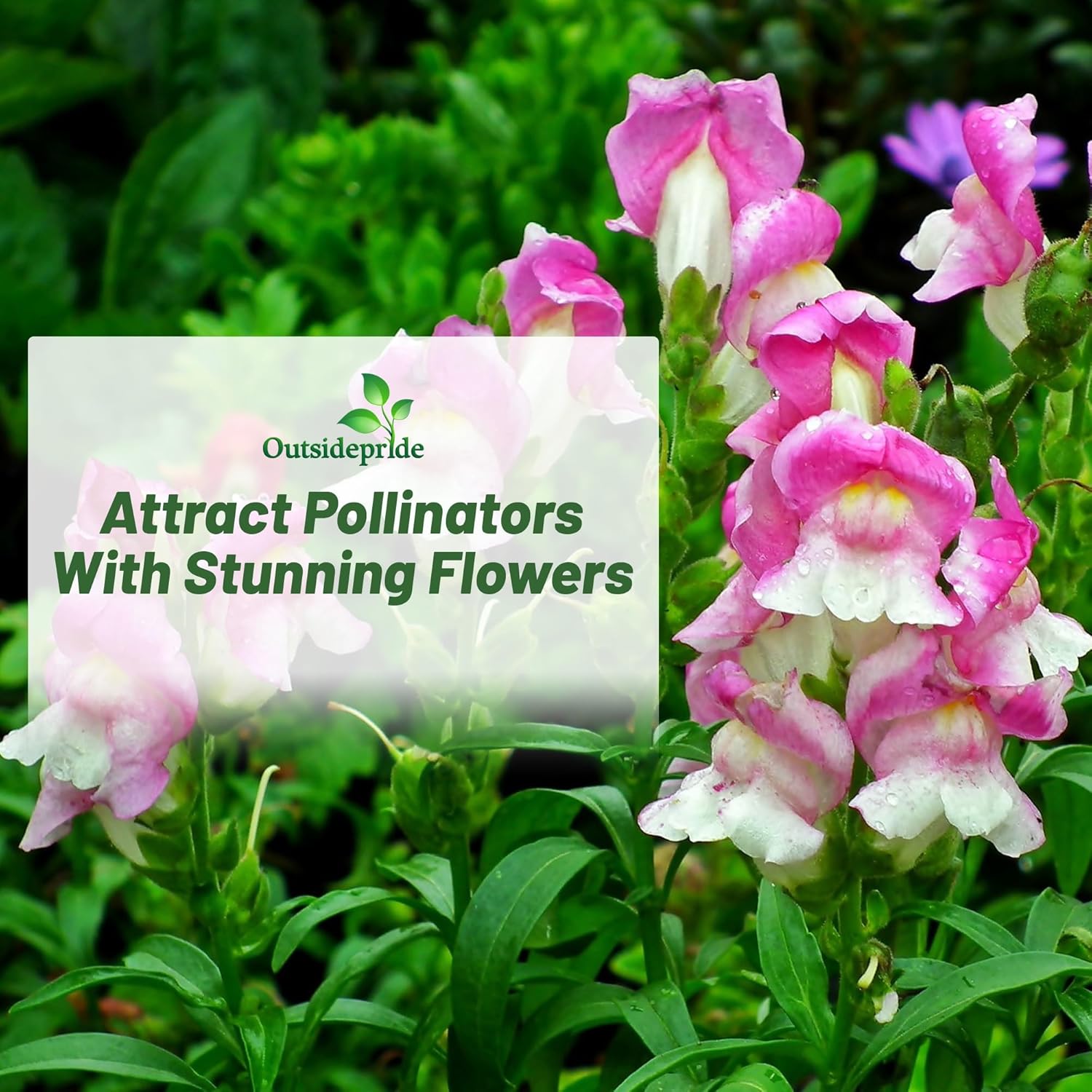




Toadflax Seeds
SEEDS PER POUND
6,800,000
SEASON
Annual
USDA ZONES
3 - 10
HEIGHT
9 - 18 inches
BLOOM SEASON
Mid-summer
BLOOM COLOR
Mix
ENVIRONMENT
Full sun to partial shade
SOIL TYPE
Light, sandy, pH 5.8 - 7.2
DEER RESISTANT
Yes
SEASON
Perennial
USDA ZONES
5 - 10
HEIGHT
10 inches
BLOOM SEASON
Spring through winter
BLOOM COLOR
Mix
ENVIRONMENT
Partial shade
SOIL TYPE
Well-drained, pH 6.1 - 7.5
DEER RESISTANT
Yes
HOUSE PLANT
Yes
LATIN NAME
Sinningia speciosa
SEASON
Annual
USDA ZONES
3 - 11
HEIGHT
120 inches
BLOOM SEASON
Spring to fall
BLOOM COLOR
Purple
ENVIRONMENT
Full sun to partial shade
SOIL TYPE
Rich, loamy soil, pH 5.5 - 6.5
DEER RESISTANT
No
SEASON
Perennial
USDA ZONES
7 - 11
HEIGHT
28 inches
BLOOM SEASON
Spring to fall
BLOOM COLOR
Rosy purple
ENVIRONMENT
Full sun to partial shade
SOIL TYPE
Well drained soils, pH 6.6 to 7.5
DEER RESISTANT
Yes
SEASON
Perennial
USDA ZONES
7 - 11
HEIGHT
4 inches
WIDTH
12 - 18 inches
BLOOM SEASON
Early spring to early fall
BLOOM COLOR
Pink
ENVIRONMENT
Full sun to partial shade
FOOT TRAFFIC
Light
DEER RESISTANT
Yes
SEASON
Annual
USDA ZONES
3 - 11
HEIGHT
100 - 140 inches
BLOOM SEASON
Late spring to late summer
BLOOM COLOR
Mix
ENVIRONMENT
Full sun
SOIL TYPE
Well drained, pH 6.6 - 7.5
DEER RESISTANT
No
HOUSE PLANT
No
SEASON
Annual
USDA ZONES
4 - 9
HEIGHT
12 inches
BLOOM SEASON
Late summer to early fall
BLOOM COLOR
Mix
ENVIRONMENT
Full sun
SOIL TYPE
Moist, well-drained, pH 6.6 - 7.3
DEER RESISTANT
Yes
SEASON
Perennial
USDA ZONES
9 - 11
HEIGHT
120 inches
BLOOM SEASON
Mid summer to late fall
BLOOM COLOR
Orange, red, yellow
ENVIRONMENT
Full sun
SOIL TYPE
Sandy, well drained soil, pH 5.5 - 7.5
DEER RESISTANT
Yes
LATIN NAME
Mina lobata
About...
Toadflax (Linaria Maroccana) - What a spectacular display of colors from Toadflax seeds. This wildflower seed is extremely tiny, but it is easy to grow and very rewarding. Native to Morocco, Toadflax, also called Baby Snapdragon, is an upright, branching annual that typically grows to 9 - 18 inches tall.
MORE FLOWER OPTIONS
Planting Directions
TEMPERATURE
55 - 65F
AVERAGE GERM TIME
10 - 20 days
LIGHT REQUIRED
Yes
DEPTH
Do not cover the seed but press into the soil
SOWING RATE
1/3 ounce per 1,000 square feet or 1 pound per acre
MOISTURE
Keep seeds moist until germination
PLANT SPACING
9 inches


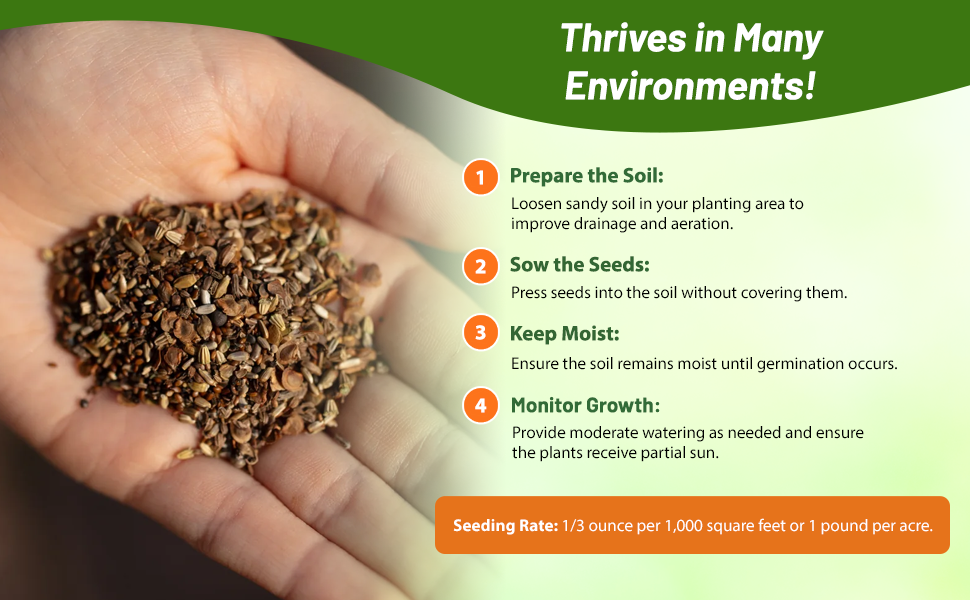

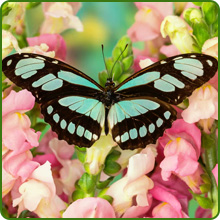
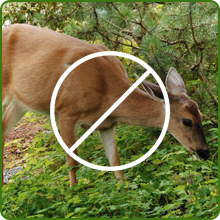
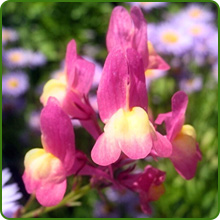


Toadflax (Linaria Maroccana) - What a spectacular display of colors from Toadflax seeds. This wildflower seed is extremely tiny, but it is easy to grow and very rewarding. Native to Morocco, Linaria, also called Baby Snapdragon, is an upright, branching annual that typically grows to 9 - 18 inches tall. It features long-spurred, two-lipped, miniature snapdragon-like flowers and small lance-shaped fleshy blue green leaves. The flowers bloom spring to fall in cool summer climates, but usually stop blooming in the heat of summer in hot climates. In the wild, the Baby Snapdragon Toadflax bloom color is usually purple-violet with a yellow blotch on the palate. Cultivars extend the color range to include shades of lavender, yellow, orange, pink, red and white, usually with contrasting color blotches on the palates. Very lovely and perfect for the front of the flower border. Hummingbirds and butterflies will visit Toadflax wildflowers often!
How To Grow Toadflax: Sow Toadflax seeds outdoors as soon as the ground can be worked. Prepare the seedbed by weeding and loosening the soil. Press the Baby Snapdragon wildflower seeds into the soil but do not cover it. Keep it moist until germination.
Planting Directions
TEMPERATURE
70 - 75F
AVERAGE GERM TIME
21 - 28 days
LIGHT REQUIRED
Yes
DEPTH
Do not cover the seed but press into the soil
SOWING RATE
4 seeds per plant
MOISTURE
Keep seed moist until germination
PLANT SPACING
10 inches
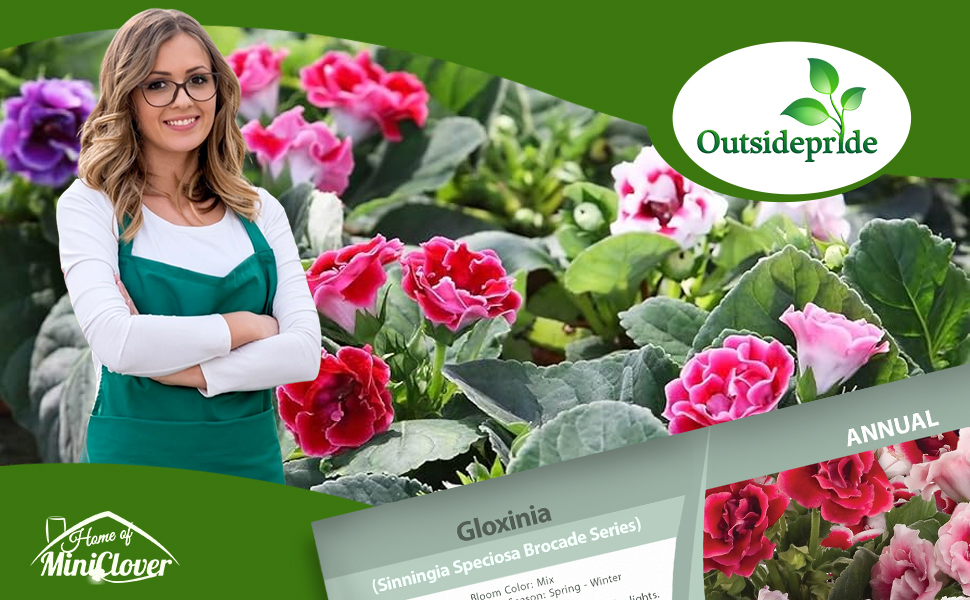


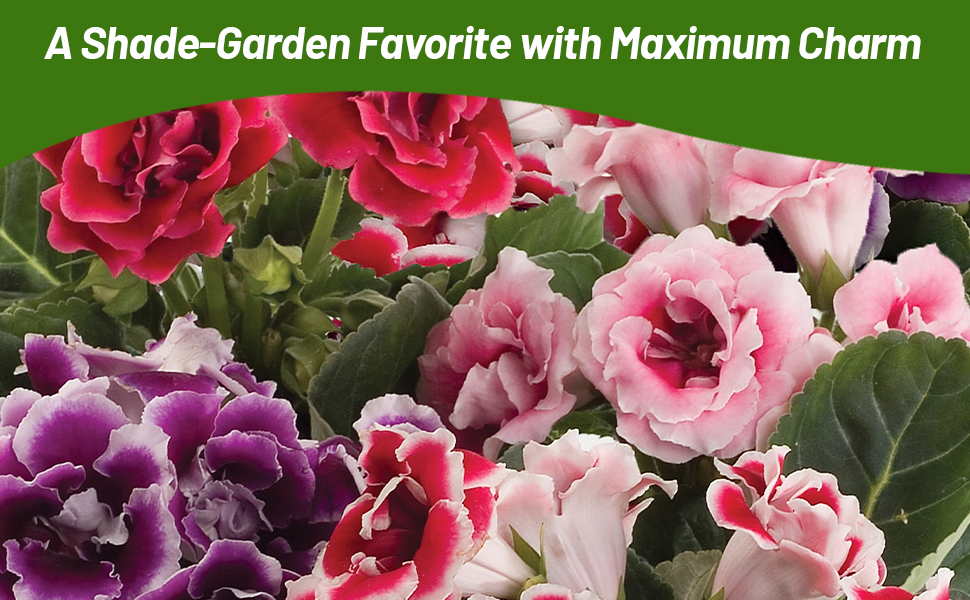

Gloxinia (Sinningia Speciosa Brocade Series) - Sow Gloxinia seeds to produce a beautiful mixture of red, blue, and white blooms. These compact Gloxinia plants blossom four to six months after sowing. They will flower for about 2 months, go dormant for about 2 months, and then begin growing again and start flowering. Gloxinias make a great house plant, giving wonderful, colorful blooms! Sinningia Speciosa is often referred to as Florist's Gloxinia or Brazilian Gloxinia.
Gloxina seeds are a bit tricky to germinate and do best indoors and under lights. Do not cover the flower seeds after sowing since they need light to germinate. Sinningia Speciosa seeds should germinate in about 3 weeks at 70 - 75F degrees. Soil should be kept uniformly moist, but do not keep it saturated. Florist's Gloxinia care includes avoiding watering the crown of the plant as this might cause the plant to rot, and use water that is at room temperature for watering. The Brazilian Gloxinia plant needs lots of light, but no direct light. Gloxinias do best in temperatures around 65 - 75F degrees, especially when they are blooming. After blooming, keep watering to a minimum and don't fertilize.
Common Questions
Do I need to prune my gloxinia?
To encourage a longer bloom season, you will need to deadhead your spent flowers. After the bloom period is over and your plant enters dormancy, prune back any dead or dying foliage.
My leaves are dropping, what do I do?
This can occur from sudden temperature changes such as drafts.
My leaves look scorched, why?
Direct sunlight can burn the leaves of your gloxinia, causing them to scorch and crisp.
My flowers are losing their vibrancy, what do I do?
This is typically caused by inadequate light move your plant to an area with more light but not direct sunlight.
Planting Directions
TEMPERATURE
60 - 65F
AVERAGE GERM TIME
12 - 40 days
LIGHT REQUIRED
Yes
DEPTH
1/16th inch deep
SOWING RATE
2 - 3 seeds per plant
MOISTURE
Keeps seeds moist until germination
PLANT SPACING
10 - 12 inches
Purple Bell Vine (Rhodociton Atrosanguineus) - Grow Rhodociton Atrosanguineus seeds for an exotic vine that will have everyone's attention! Rhodociton Purple Bell Vine has heart-shaped leaves and dark purple bell-shaped flowers that dangle from thread-like stems. Bell Vine uses include baskets where it will cascade over the edges and look stunning or give it a trellis where it will grow with support up to 120 inches in height. Rhodociton Purple Bells needs rich, well-drained soil and full sun to partial shade although it prefers afternoon shade in hotter climates. Purple Bells bloom from late spring to late fall.
Sow Purple Bell Vine seeds indoors in late winter. Gently press the flower seeds into the soil and barely cover the seed with soil. Keep consistently moist until germination occurs. Harden the seedlings off for 10 days or more before planting outdoors. Purple Bell Vine is free-flowering and needs little care.
















